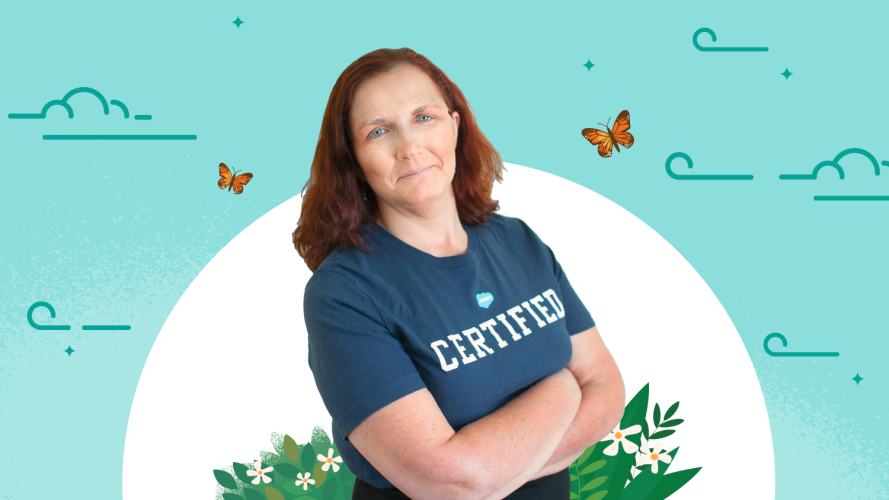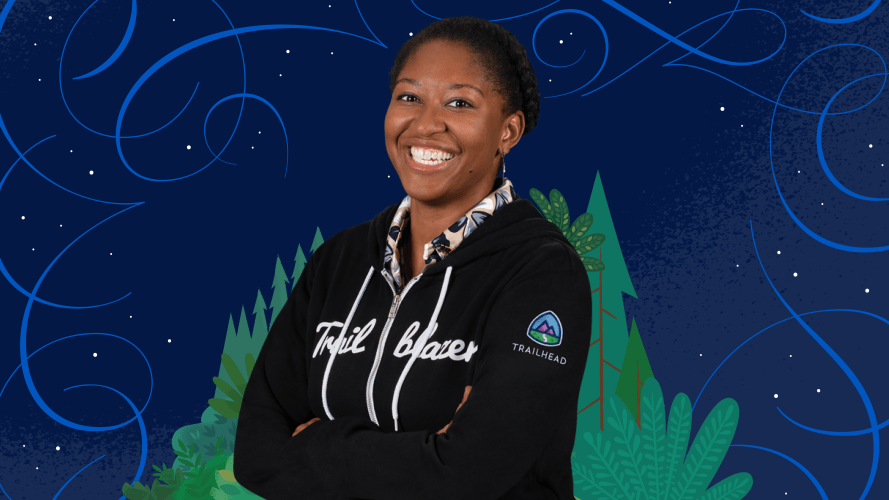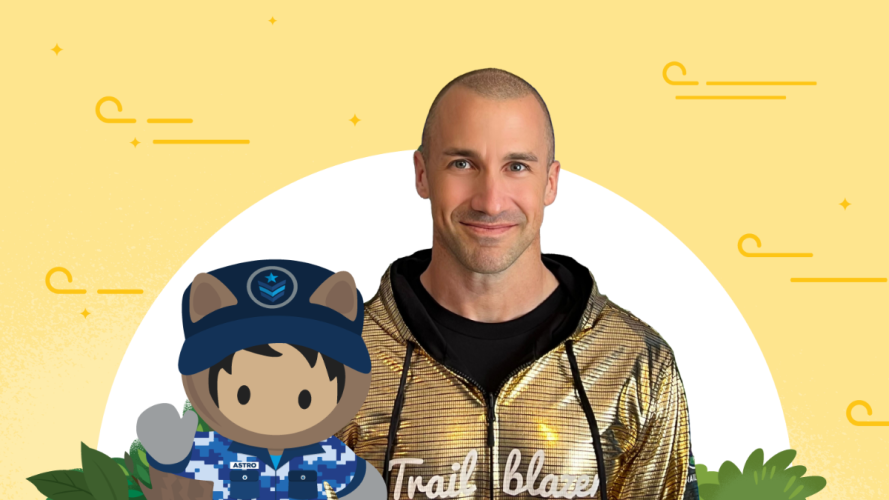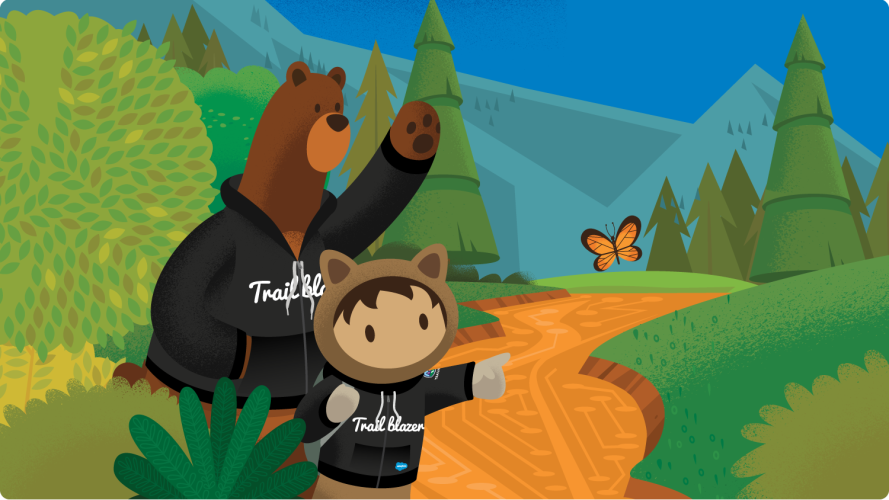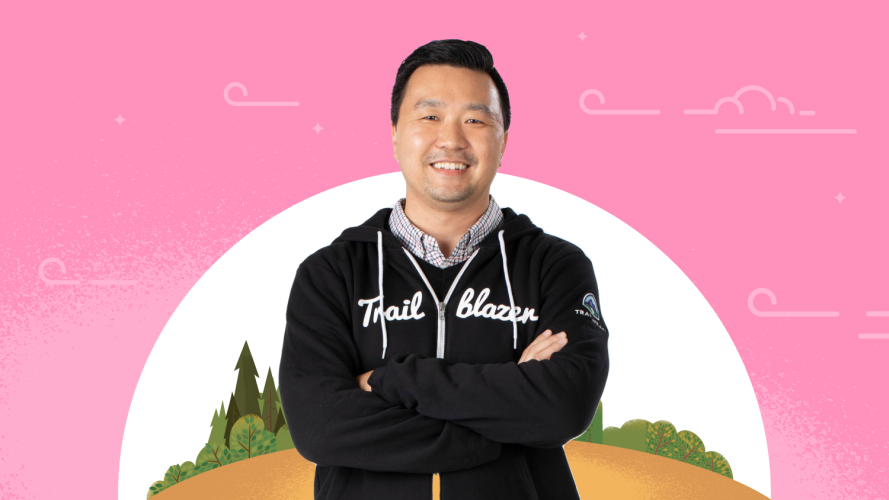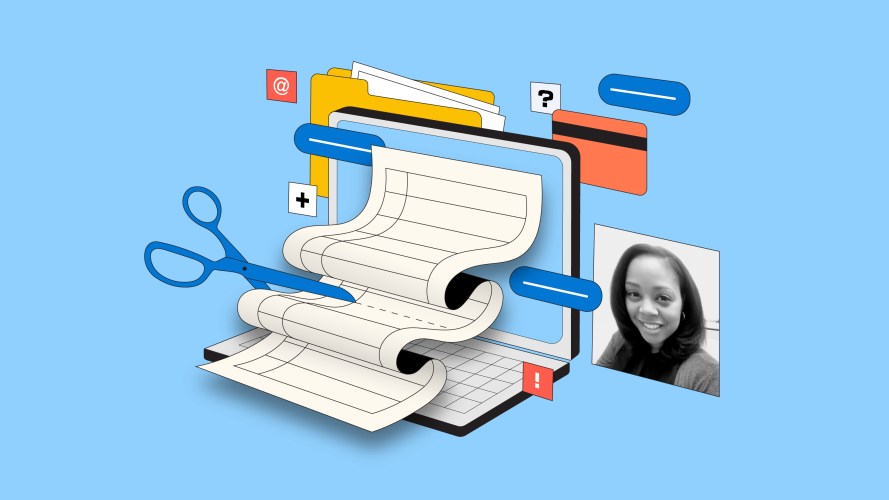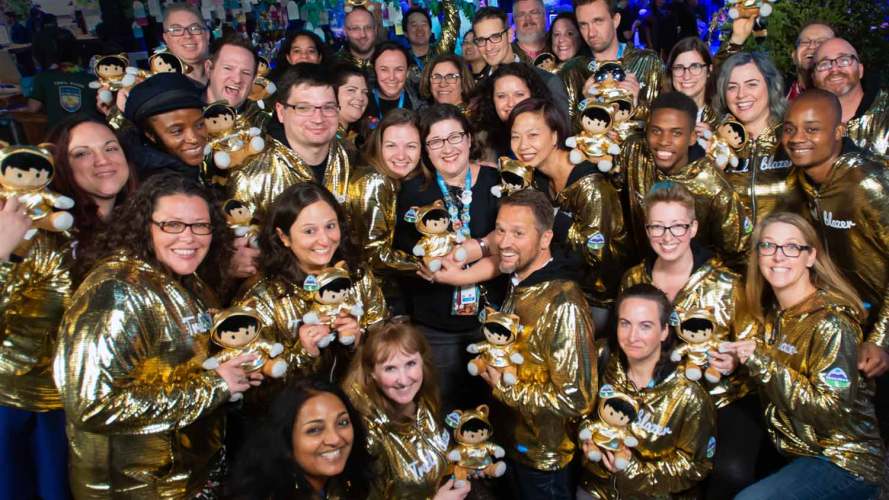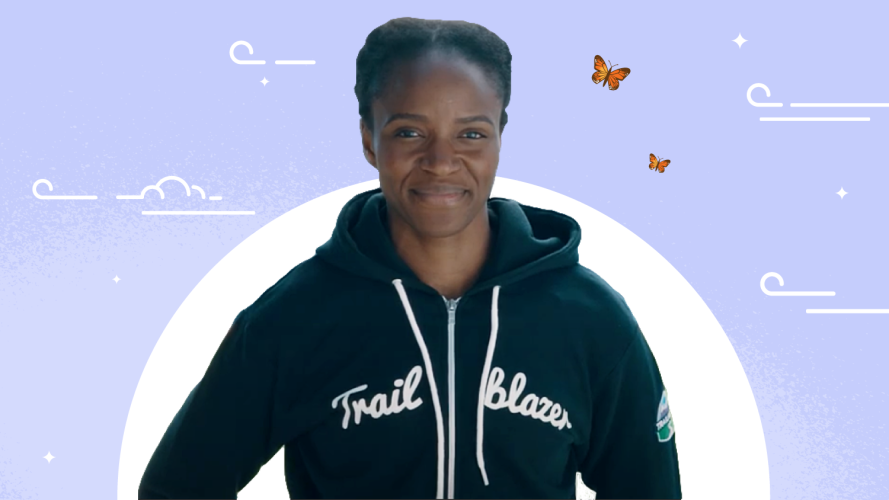How Human-Centered Design Inspired My Salesforce Strategy Designer Career Journey
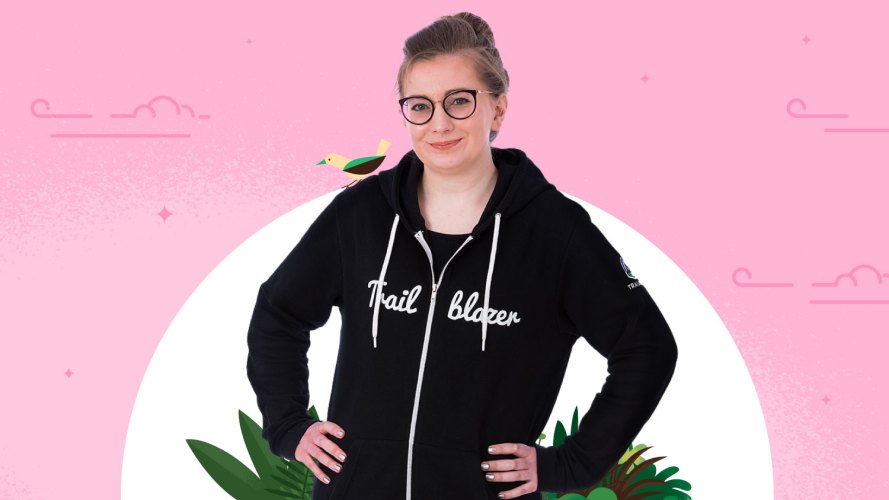


Learn how Trailblazer Angela Conway used her passion for human-centered design to guide her career journey and land her ideal Salesforce Designer role.
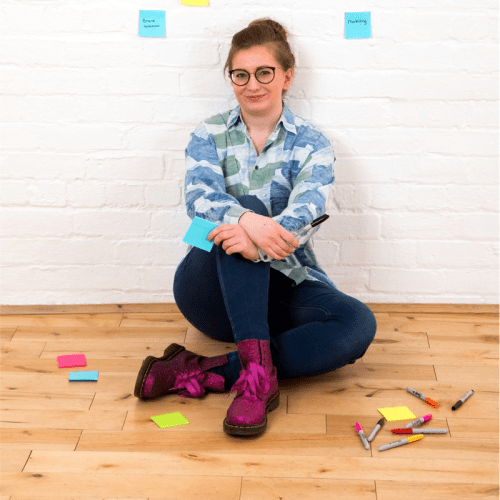
Angela Conway
If there’s one thing I’ve learned about Salesforce, it’s that everyone is welcome and can thrive in this ecosystem.
Before joining this community, I had forged a decent career in service and experience design. But it was a health journey that compelled me to pivot and apply my human-centered design skill sets to Salesforce solutions.
The charity that made a lasting impact
In 2010, I was diagnosed with a brain tumor. I was in my final year at the University of Edinburgh, and one evening, I suddenly had an immediate, excruciating headache. When I got to the hospital, the doctors found I had a brain hemorrhage caused by an underlying tumor. Because of where it was located, it was safest not to operate unless it started to grow.
Five years later, it did begin to grow, and it was time to undergo major open brain surgery. Surgery was tough, and recovery was tough. I went through a 6-month brain injury rehab course to understand and accept my “new normal.”
During this turbulent time in my life, The Brain Tumour Charity was there for me, giving me key information to help me at the different stages of my journey. Once I was well on my road to recovery, I got more involved with the charity by fundraising and giving talks to raise awareness of the signs and symptoms of brain tumors.
As I worked with the charity, I learned that Salesforce powers its essential work.
The power of compassion in business
Segmented customer journeys are well used in the world of commerce. Still, in going through my brain tumor journey firsthand, I got to experience the impact an intuitive, empathetic customer journey can have on someone’s life.
If you’re visiting the charity website because you’re fundraising or holding a bake sale, that’s an important and much-needed interaction. But you need to be served very different content than someone who has just gone through surgery and is staring at hospital walls at 2:00 AM trying to figure out their next steps… like I was.
The Brain Tumour Charity used Salesforce to shepherd me through the most challenging time of my life. They helped me understand my options as a patient and things to look out for or ask during consultations.
They also connected me with a community of people going through similar experiences for support and advice. Learning how Salesforce had empowered them to do that left a lasting impression on me.
Finding the ideal design thinking opportunity
Before and during my recovery from surgery, I worked as an account manager for a digital agency specializing in service and experience design. Around 2019, I became more curious about strategy design and perhaps making the leap to a consultant role. And I found the ideal opportunity to test out what it would be like to be a human-centered strategy designer in a safe environment: Sunday mornings at my church.
My church was looking to make some strategic decisions about where they would focus their energy in the coming years. So, I volunteered to take an informal strategy designer role by running a design thinking workshop with congregation members.
During the workshop, we identified the different types of people and partnerships we wanted to improve experiences for: parents, couples preparing for marriage, the bereaved, and those attending fundraisers.
Next, we explored people’s needs within those different groups, making suggestions, iterating, and prototyping some key changes to strengthen those partnerships and better meet the needs of our community.
I remember seeing that lightbulb moment on people’s faces as they stepped back to approach their strategy differently. It was inspiring and confirmed that I was making the right decision to pivot my career path.
How to add Salesforce to your design toolkit
In 2020, like so many others, I was laid off from my consultant role due to the pandemic. But this was just the push I needed to think about where I wanted my career to go next. Inspired by my experiences with The Brain Tumour Charity, I was intent on adding Salesforce to my design toolkit.
So I used Trailhead—Salesforce’s free online learning platform—to skill up and prepare for my Salesforce Designer career journey.
Here’s how:
- Start at the beginning. I hit Trailhead and took the Salesforce User Tour.
- Learn the basics. I earned badges on modules like Accessibility Basics, Salesforce Platform Basics, Salesforce User Basics, and Customer Journey Basics.
- Explore badges linked to content that interests you. I explored modules on Customer-Centric Discovery, Demo Storytelling, Career Development Planning, and the Business Value of Equality.
- Get certified. I found that the Salesforce Administrator credential was a stepping stone to many of the paths I wanted to take. So I decided to focus my time on learning from the modules and projects that would lead me toward the admin certification.
I was so excited when I found a job posting for a Salesforce Consultant at PwC UK. I applied. And I found that where my service and experience design and consulting backgrounds showed that I could bring a human-centered angle to the role, my admin certification proved my early commitment to getting to grips with Salesforce as a platform.
After a few rounds of interviews (in which I sent out my CV on an interactive Miro board and walked through my V2MOM), I got the job!
Why Salesforce Design Certifications are a must
Salesforce Design Certifications prove you have a baseline understanding of critical design concepts like design thinking, researching with users, and UI best practices. They also show you can match these concepts with knowledge of the Salesforce Platform.
Becoming certified is a reassurance for yourself, and those who want to work with you, that you know your stuff and can contribute meaningfully to optimized, enduring solutions and experiences.
And now, with the Salesforce UX Designer and Strategy Designer credentials, those interested in pursuing a design career in the Salesforce ecosystem can take their career path even further.
Earn role-based Salesforce credentials
Prove your hands-on experience with Salesforce and gain a competitive edge that leads to new opportunities.



Four tips to supercharge your design career journey
I am just one of the many people who have found and embraced Salesforce via a somewhat unconventional career journey and life path. There’s space for a whole new wave of unexpected, curious Trailblazers to find their niche right alongside me!
If you’re new to Salesforce, here are my four top tips for creating your unique path to designer success in the Salesforce ecosystem:
- Upskill using Trailhead. Just like developers, administrators, and architects, designers now have an official Salesforce role and career path. And Trailhead has a wealth of content to help you skill up in design, including the Salesforce Strategy Design Career and Prepare for your UX Designer Credential trailmixes.
- Find your local Trailblazer Community Groups. Learning and upskilling are more fun when you have a team behind you. After I decided to turn my career path toward Salesforce, I found my work colleagues, my local Newcastle Women in Tech group, and my local Community Groups to be invaluable sources of teamwork and support.
- Get certified. In the months leading up to my start date at PwC UK, I used the time to study up and take my Sales Cloud Consultant credential. Since then, I’ve also passed the Service Cloud Consultant and Platform App Builder credentials. Now, with the UX Designer and Strategy Designer credentials, Salesforce Designers have even more opportunities to prove their skills. Both exams are written by subject matter experts who work in the field (I actually got to be part of the exam writing team on both of these). They are fun, challenging, and can help you make that career change you’ve been dreaming about.
- Discover the Salesforce Designer Career Path. Find all the info you need to get started.
Check out my favorite resources!
- Trailblazer Community Group: WIT Group: Newcastle upon Tyne, UK
- Trailmix: Salesforce Strategy Design Career
- Trail: Learn Strategy Design
- Module: Salesforce Designer: Quick Look
The Trailblazer Blog
Discover expert insights to help you develop your career, connect with Trailblazers, learn Salesforce, and earn certifications. Explore practical how-to guidance, authentic peer perspectives, and inspiring Trailblazer stories.








